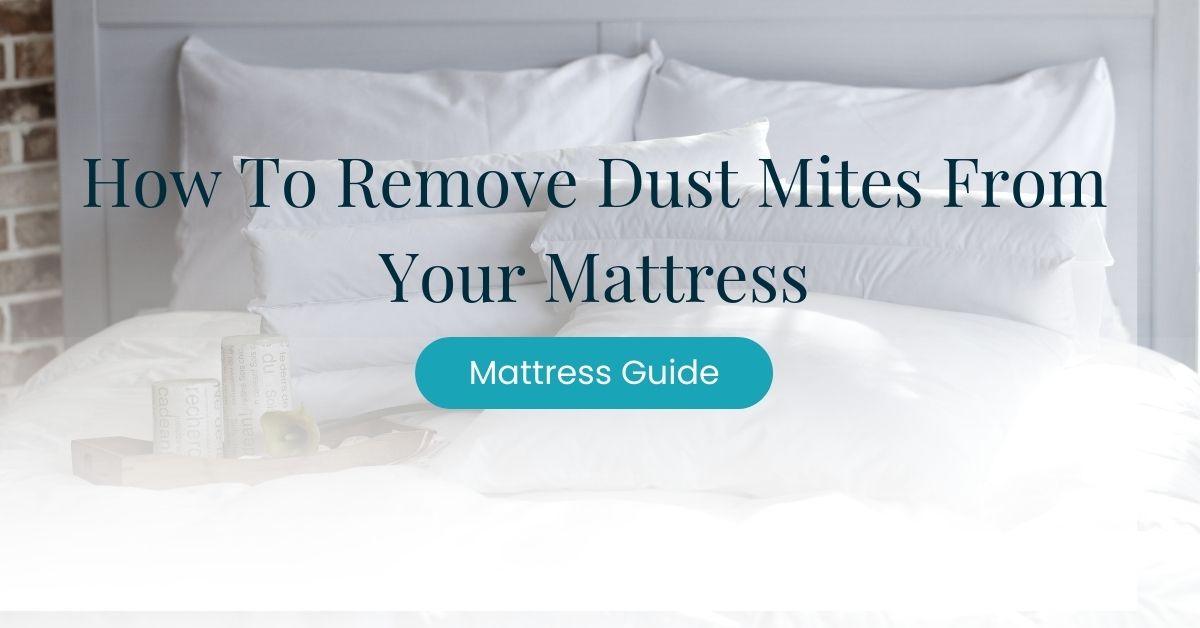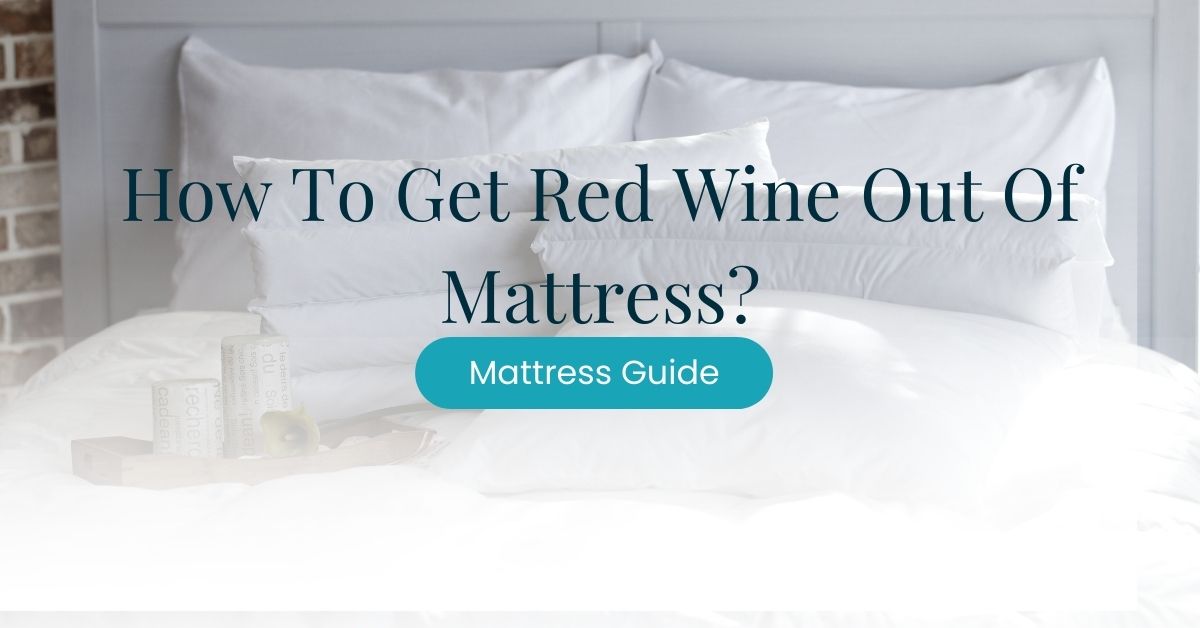Have you realised, to your dismay, that you have dust mites on your mattress?
If you’re wondering how to remove dust mites from your mattress and suffer from allergic reactions like sneezing, then know you’re not alone.
An estimated 65 to 130 million people worldwide are allergic to house dust mites, considered the most common trigger of year-round allergies and asthma.
Unlike bed bugs or lice that can be visually noticed, dust mites are microscopic in size, so you can’t see them with your own eyes.
This blog will give you a deeper understanding of dust mites, how they survive, what makes us allergic, and how to get rid of dust mites, especially on your mattress.
If you need to tackle multiple stains and odours, check out our how to wash a mattress all-in-one guide.
What are dust mites?
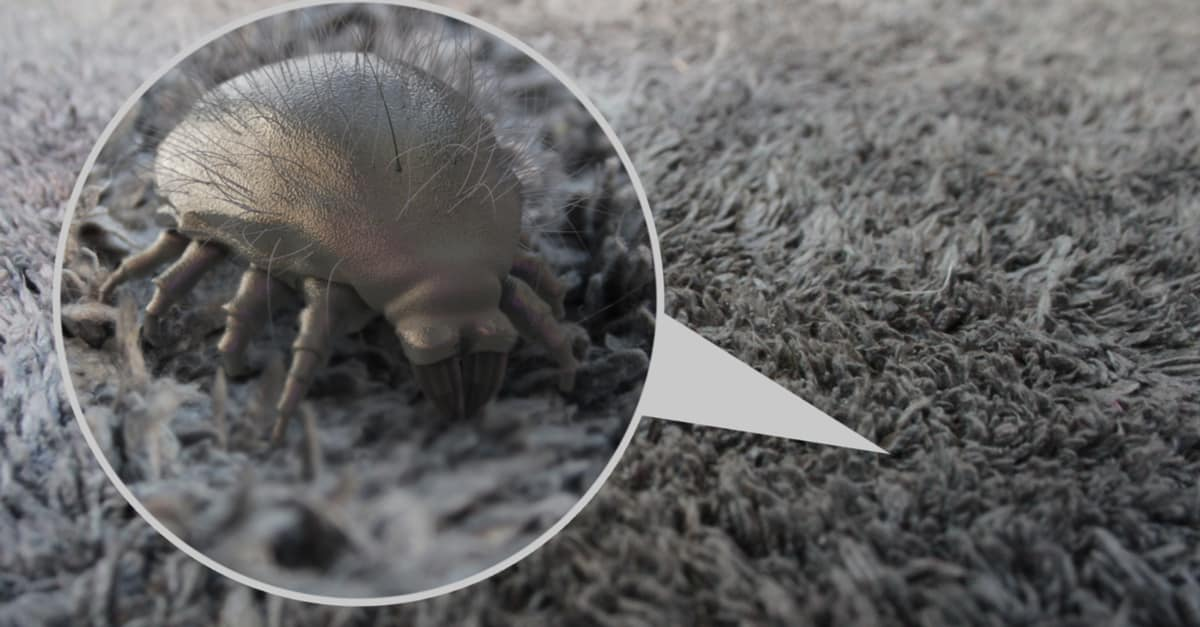
Dust mites can only be seen under a microscope, measuring only 300 to 400 microns.
Unlike lice and bed bugs, they are not parasites and only feed on dead skin flakes from humans and animals. With people shedding skin cells at an average rate of 500 million cells every day, dust mites will never starve with human presence.
Dust mites can thrive for up to three months in favourable conditions, temperatures of 20 to 25 ℃ and humidity levels of 70 to 80%.
Since their bodies are 75% water by weight, they survive by absorbing moisture from the water vapour in the air.
Where Do Dust Mites Live?
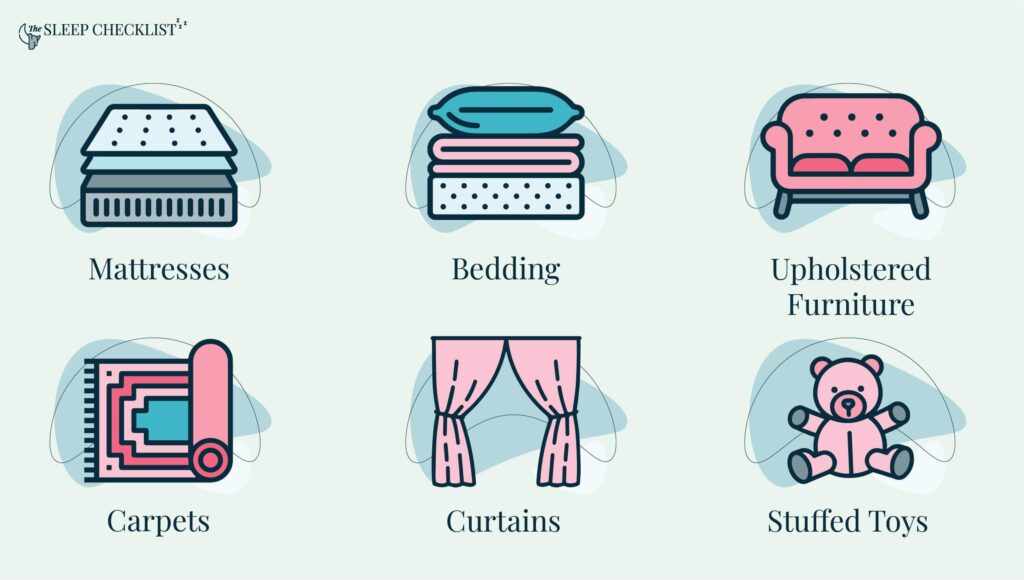
Relative humidity in your bedroom is critical for dust mite survival.
Considering the environmental conditions where dust mites thrive, dust mites are found in areas where dead skin cells accumulate and in warm, humid places like:
- Mattresses
- Bedding
- Upholstered furniture
- Carpets
- Curtains
- Stuffed toys
How to get rid of dust mites from your mattress naturally?
Now that we know how what the ideal environment is for dust mites to thrive, that is, temperatures of 20 to 25 ℃ and humidity levels of 70 to 80%, let’s wrap up what kills dust mites:
- Extreme hot and cold temperatures
- Humidity below 70%
- Lack of moisture
Here are the following ways to get rid of dust mites from your mattress.
Regularly wash Your beddings
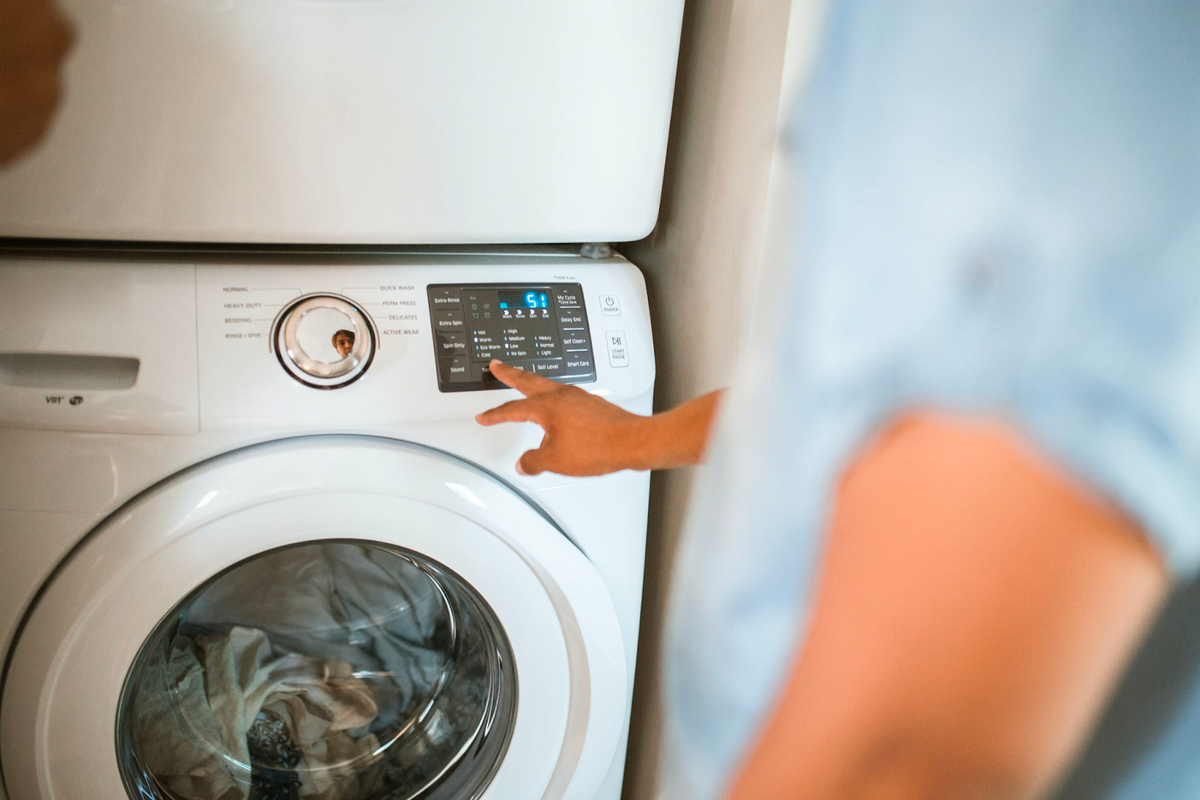
If you’re wondering what laundry detergent kills dust mites, the answer is that most can do the job.
What matters most is the water temperature used in washing.
In a study, dust mites were killed by 55 ℃ or greater water temperatures. Dust mites aren’t the only living organism that could live on your mattress, so bookmark how to clean lice from a mattress just in case your little ones get them.
Regular washing of beddings, at least once a week, will help remove dead skin cells accumulated during the week. This removes a vital food source, so the remaining dust mites won’t have anything to feed on.
Using baking soda and vacuum
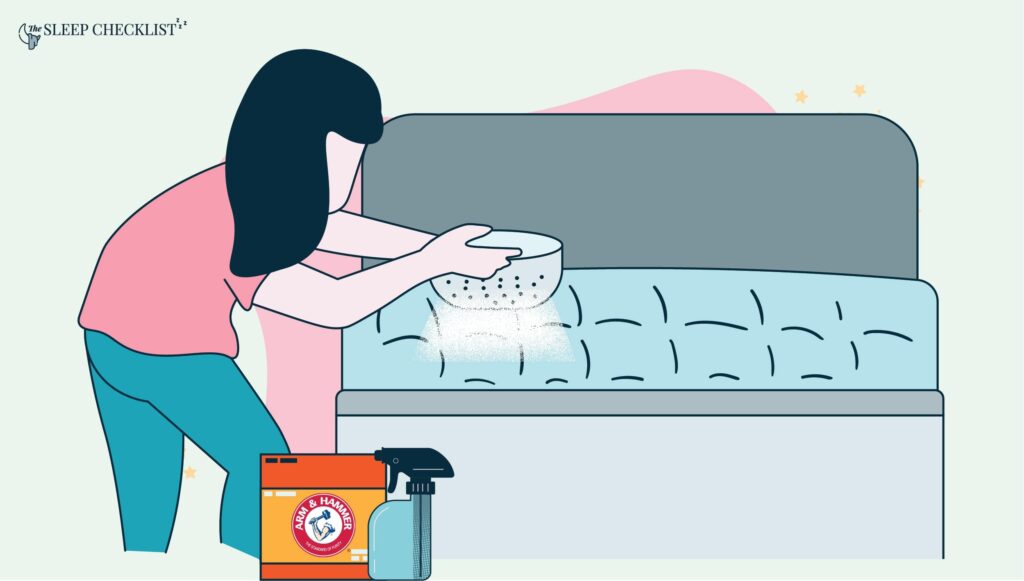
Baking soda is a powerful ingredient in mattress cleaning. Baking soda is the go-to for most mattress cleaning endavours, from cleaning wine stains from a mattress to cigarette smells and more.
But how does baking soda kill dust mites?
Baking soda is a hygroscopic substance that will absorb moisture from the air or any surface it is applied.
This makes baking soda a natural dehumidifier. When used on a mattress, it will remove the moisture in the mattress surface, making it unfavourable for dust mites to survive.
To do this method,
- Sprinkle baking soda all over the surface of your mattress.
- Let it sit for at least 4 hours to let it absorb any moisture.
- Remove the baking soda using a vacuum.
Vacuuming will also remove the dead skin cells, dust mites, dead dust mites, and dust mite droppings on the mattress surface. We recommend using a vacuum with HEPA filter, like this one from Dyson, to get rid of dust mites.
HEPA is an acronym for “high-efficiency particulate air”. A type of air filter can theoretically remove at least 99.97% of dust, pollen, mould, bacteria, and any airborne particles with a size of 0.3 microns.
Remember that dust mites are as small as 300 microns, and droppings are as small as 20 microns? This means that they will be filtered using HEPA.
Reducing bedroom humidity
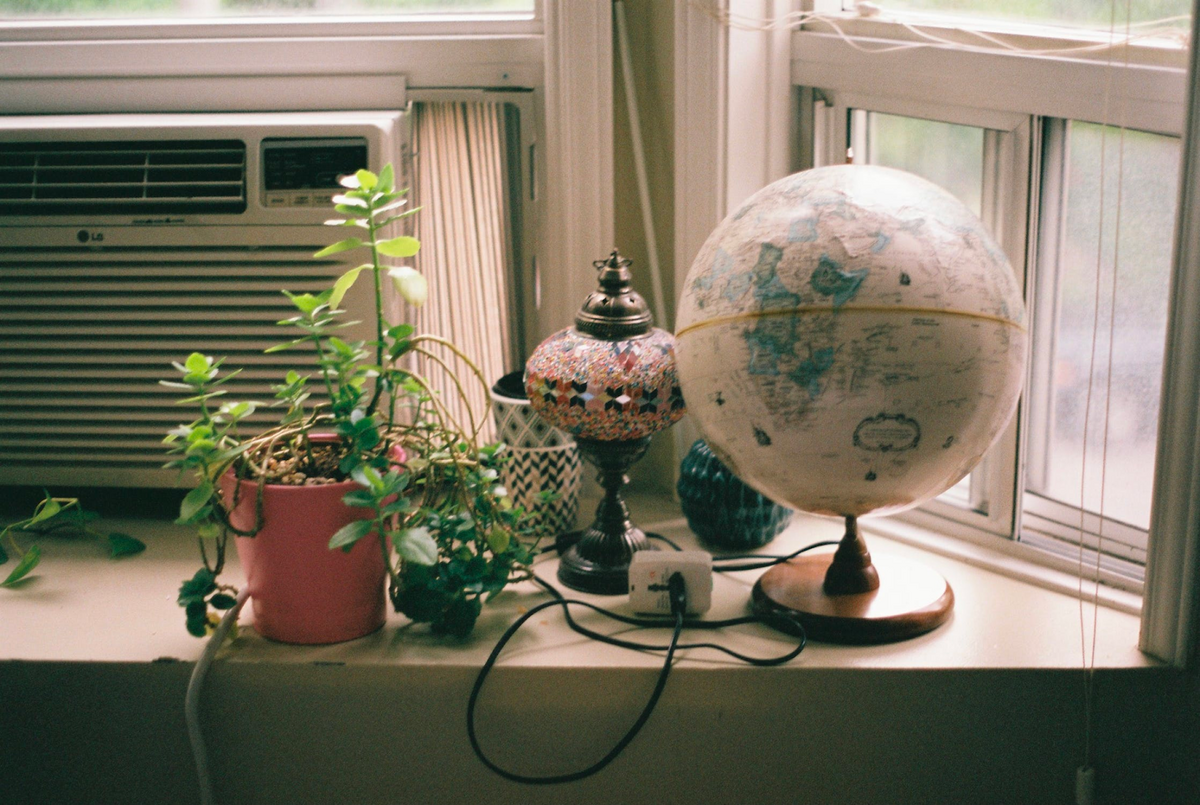
As mentioned, relative humidity is a critical factor for dust mites and other creatures like fleas to thrive.
According to a study, relative humidity should be reduced to less than 50% to kill dust mites, which should be a good sleeping humidity level.
This humidity level can be achieved using dehumidifiers or an air conditioner in the bedroom. The difference between the two is their cooling function, but both work in reducing moisture in the air.
- Use an air conditioner if you live in a hot weather area where you need cooling.
- Use a dehumidifier if you live in a cool-weather area where you don’t need cooling.
Why Are Dust Mites Bad?
According to American Lung Association, people are not allergic to dust mites themselves but to the proteins in dust mites’ faeces, urine, and decaying bodies?
These particles are so small that they can be airborne, ranging from 20 to 50 microns. It is estimated that house dust mites can produce 20 faecal droppings per day.
So if you have a million dust mites in your bed, that’s 20 million droppings!
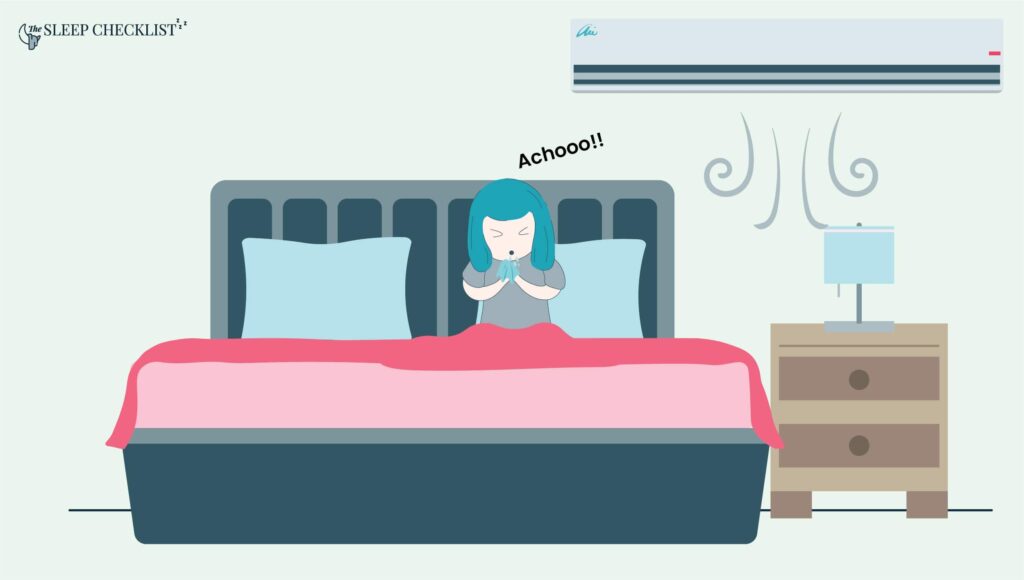
Dust Mite Allergy Symptoms
For people sensitised to dust mites allergens, they can experience symptoms like:
- sneezing
- runny or stuffy nose
- feeling weak and tired
- itchy and watery eyes
- swollen eyelids
- coughing
- wheezing
- shortness of breath
Suppose you’re experiencing one or multiple symptoms, especially in bed. It might signify that your mattress has dust mites and you’re allergic to them.
Does Lysol kill dust mites?
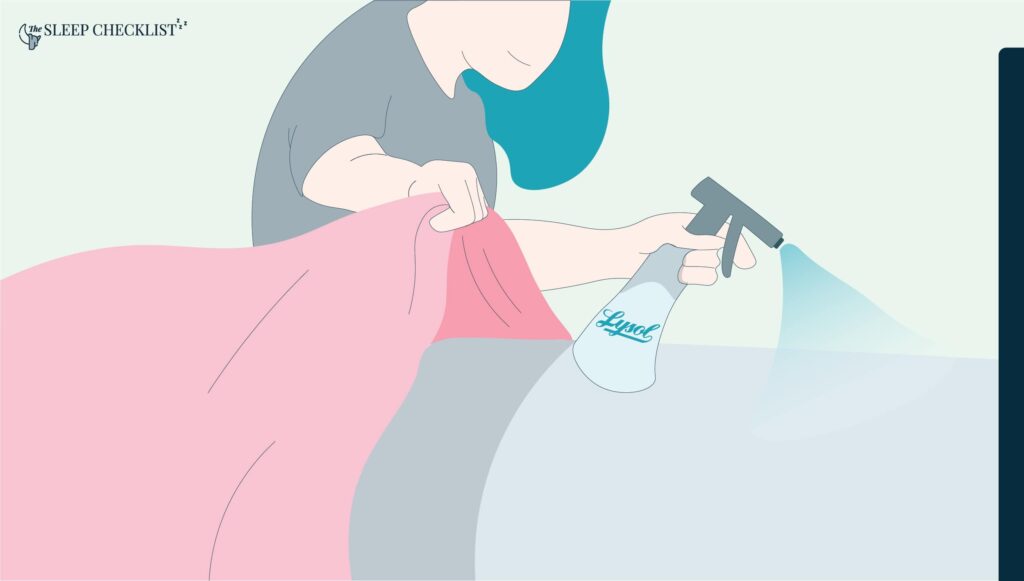
Yes, Lysol kills dust mites. They claim that, too, as Lysol contains chemicals like benzalkonium chloride that is toxic to dust mites. But remember, dust mites are not the cause of allergies but rather the droppings and dead bodies.
You might have effectively killed dust mites with Lysol but did not completely eliminate the allergens. To do this properly:
- Spray Lysol all over your mattress to remove all the dust mites.
- Allow it to dry.
- Vacuum the area to remove the dead dust mites and droppings.
Dust Mites Prevention Tips
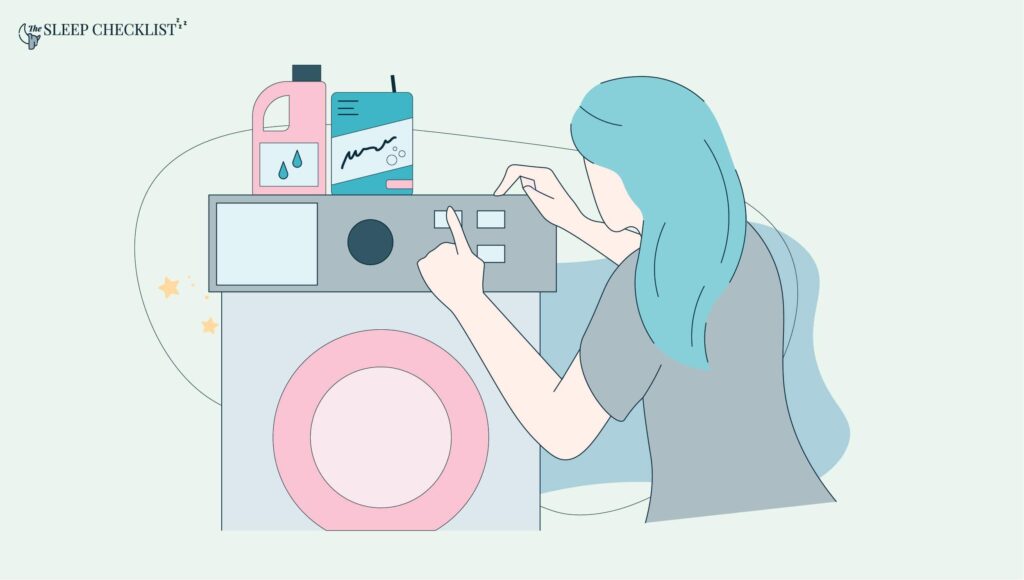
Dust mites allergens can be eliminated on a mattress by
- Washing beddings weekly using high temperature
- Removing mattress moisture using baking soda
- Removing dust mites, dust mite droppings, and dead dust mites using a vacuum
- Reducing bedroom humidity using air conditioning or dehumidifier
Aside from the steps above, here are some other precautions you can do to prevent dust mites from pestering your mattress in the first place:
- If it can’t be removed from the bedroom, regularly wash stuffed toys in hot water.
- Use synthetic pillows instead of traditional feathered ones so they can regularly be washed on high heat.
- Avoid using carpets in bedrooms which can be a trap to dust.
- Opt for blinds in bedrooms instead of curtains which can also trap dust.
- Use a damp mop or rag to remove dust on floors and furniture to capture dust.
- Keep your mattress and pillows in dustproof, machine washable covers.
11 Sources
- Respiratory allergy caused by house dust mites: What do we really know? (2014). Retrieved from The Journal of Allergy and Clinical Immunology:
https://www.jacionline.org/article/S0091-6749(14)01482-1/pdf - Dust Mite Allergy . (n.d.). Retrieved from Asthma and Allergy Foundation of America:
https://www.aafa.org/dust-mite-allergy/ - Dust Mites and Cockroaches . (n.d.). Retrieved from National Institute of Environmental Health Sciences:
https://www.niehs.nih.gov/health/topics/agents/allergens/dustmites/index.cfm - The skinny on how shed skin reduces indoor air pollution . (2011, May 9). Retrieved from American Chemical Society:
https://www.acs.org/content/acs/en/pressroom/newsreleases/2011/may/the-skinny-on-how-shed-skin-reduces-indoor-air-pollution.html - Fox, M. (n.d.). The Biology of House Dust Mites and Dust Mite Allergies . Retrieved from Airmid Health Group: https://airmidhealthgroup.com/the-biology-of-house-dust-mites-and-dust-mite-allergies.html
- Dust and Dust Mites . (n.d.). Retrieved from Lung Association:
https://www.lung.org/clean-air/at-home/indoor-air-pollutants/dust-mites - Dust mite allergies: Overview . (2020, April 23). Retrieved from National Center for Biotechnology Information:
https://www.ncbi.nlm.nih.gov/books/NBK447098/ - McDonald, L. G., & Tovey, E. (1992, October). The role of water temperature and laundry procedures in reducing house dust mite populations and allergen content of bedding. Retrieved from National Center for Biotechnology Information:
https://pubmed.ncbi.nlm.nih.gov/1401643/ - Indoor Air Quality (IAQ) . (n.d.). Retrieved from United States Environmental Protection Agency:
https://www.epa.gov/indoor-air-quality-iaq/what-hepa-filter - Lappharat, S., Taneepanichskul, N., Reutrakul, S., & Chirakalwasan, N. (2018, April 15). Effects of Bedroom Environmental Conditions on the Severity of Obstructive Sleep Apnea . Retrieved from National Center for Biotechnology Information:
https://www.ncbi.nlm.nih.gov/pmc/articles/PMC5886434/ - Ong, K.-H., Lewis, R. D., Dixit, A., MacDonald, M., Yang, M., & Qian, Z. (2014). Inactivation of dust mites, dust mite allergen, and mold from carpet . Retrieved from National Center for Biotechnology Information:
https://pubmed.ncbi.nlm.nih.gov/24467247/


